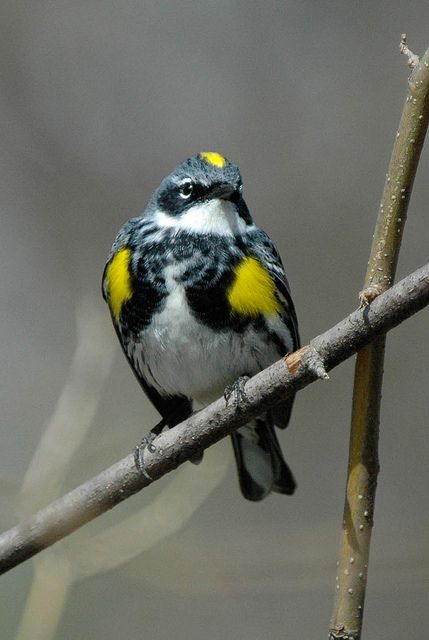Congrats to co-authors David Toews and Julian Heavyside on our publication showing that the Myrtle Warblers (a form of Yellow-rumped Warbler) migrating down the Pacific Coast of North America are primarily breeding in Alaska, the Yukon, and northern BC, rather than further east.
The UBC Science press release:Â Isotope fingerprints in feathers reveal songbirds’ secret breeding grounds
The citation:
Toews, D.P.L., J. Heavyside, and D.E. Irwin. 2017. Linking the wintering and breeding grounds of warblers along the Pacific Flyway. Ecology and Evolution, online Early View. Â DOI: 10.1002/ece3.3222 Â Link (open access!)
The Abstract:
Long-distance migration is a behavior that is exhibited by many animal groups. The evolution of novel migration routes can play an important role in range expansions, ecological interactions, and speciation. New migration routes may evolve in response to selection in favor of reducing distance between breeding and wintering areas, or avoiding navigational barriers. Many migratory changes are likely to evolve gradually and are therefore difficult to study. Here, we attempt to connect breeding and wintering populations of myrtle warblers (Setophaga coronata coronata) to better understand the possible evolution of distinct migration routes within this species. Myrtle warblers, unlike most other warblers with breeding ranges primarily in eastern North America, have two disjunct overwintering concentrations—one in the southeastern USA and one along the Pacific Coast—and presumably distinct routes to-and-from these locations. We studied both myrtle and Audubon’s warblers (S. c. auduboni) captured during their spring migration along the Pacific Coast, south of the narrow region where these two taxa hybridize. Using stable hydrogen isotopes and biometric data, we show that those myrtle warblers wintering along the southern Pacific Coast of North America are likely to breed at high latitudes in Alaska and the Yukon rather than in Alberta or further east. Our interpretation is that the evolution of this wintering range and migration route along the Pacific Coast may have facilitated the breeding expansion of myrtle warblers into northwestern North America. Moreover, these data suggest that there may be a migratory divide within genetically similar populations of myrtle warblers.

Myrtle warbler (copyright: Darren Irwin)
